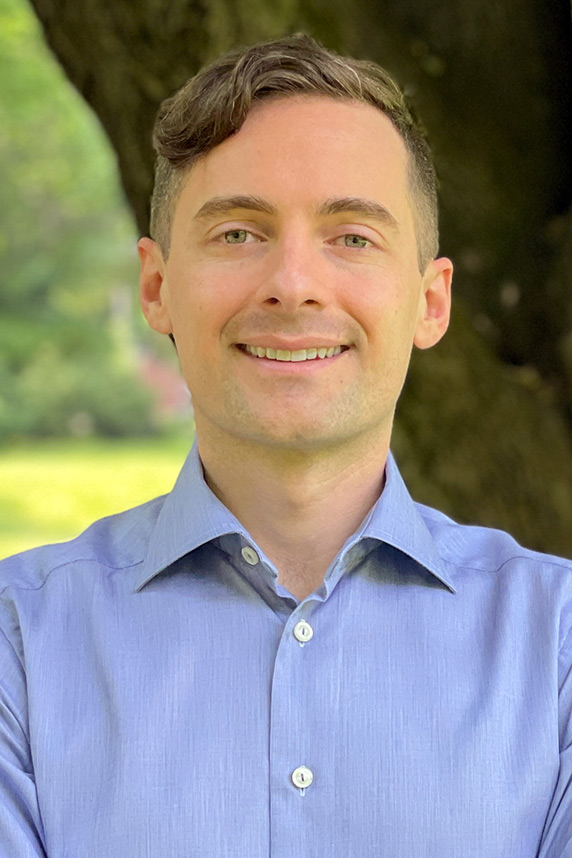NIEHS will administer two recently awarded National Institutes of Health (NIH) High-Risk, High-Reward Research program grants designed to support highly innovative scientists who proposed visionary and broadly impactful behavioral and biomedical research projects. Learn more about the NIH Director’s New Innovator Award and NIH Director’s Transformative Research Award grant recipients and their research below.
New Innovator Award
With the help of a New Innovator Award, Yue Lu, Ph.D., assistant professor of molecular pharmaceutics at the University of Utah, will work to understand how environmental factors affect organs throughout the body — all with a single blood draw.

“The study is highly significant because the novel technology framework will enable us to investigate the health impacts of the exposome at the organ level by using tissue-specific fingerprints carried by extracellular vesicles in the blood,” said Yuxia Cui, Ph.D., a program officer in the NIEHS Division of Extramural Research and Training who is overseeing the grant.
Lu’s research takes advantage of a biological phenomenon that is increasingly coming into the spotlight: tiny bubbles called extracellular vesicles. Cells throughout the body release these bubbles into the bloodstream, containing a wide array of biological molecules — or messages — that vary depending on what kind of cell they came from.
What those messages mean — if anything — is largely unknown. But Lu thinks they could provide valuable hints about their senders, allowing researchers to understand how the environment is impacting organ systems.
Transformative Research Award
Ryan Flynn, M.D., Ph.D., an assistant professor at Harvard University and principal investigator in the Stem Cell Program at Boston Children’s Hospital, received a Transformative Research Award to explore how and why RNA and RNA-binding proteins (RBPs) function on the surface of cells. RNA is a single-stranded nucleic acid essential for most biological functions and is involved in gene expression.

“Dr. Flynn plans to establish foundational tools, mechanisms, and functions for cell surface RNA biology and will deliver substantial new understanding and mechanistic insights into cell surface RNA function and cell to cell communication,” said Fred Tyson, Ph.D., program director in the NIEHS Genes, Environment, and Health Branch who is overseeing the grant. “Importantly, it also aims to shed light on how interactions between cell surface RNAs and their RBPs may be involved in disease pathogenesis.”
The work in Flynn’s lab centers around a novel and unconventional area of study: the biology of cell surface RNA. Historically, RNA was believed to be confined to the inside of the cell, performing its classical coding role in protein synthesis and emerging “non-coding” roles across the cell interior. However, Flynn’s research has revealed that RNA is glycosylated and present on the surface of cells, a discovery that challenges the current understanding of cell biology.
While Flynn’s research remains at the frontier of basic biological discovery, it holds promise for future applications in disease understanding and treatment, and could help illuminate how cells communicate with one another and how diseases such as cancer hijack these processes.
(This article was adapted from an Oct. 8 University of Utah article written by Sophia Friesen, and an Oct. 8 Harvard University article written by Alice McCarthy.)









